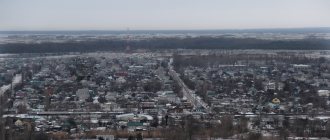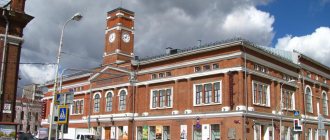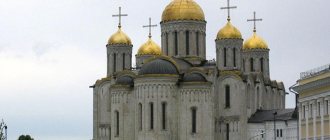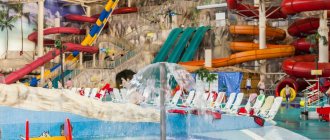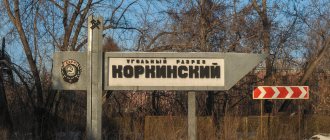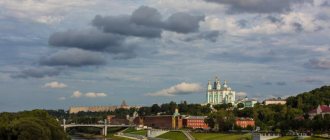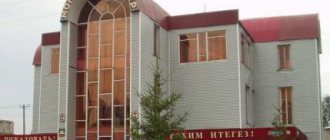About the city Kalach
URBAN SETTLEMENT CITY KALACH
KALACHEEVSKY MUNICIPAL DISTRICT
VORONEZH REGION
Urban settlement Kalach - the administrative center of the Kalacheevsky municipal district
The settlement is located on the Kalachskaya Upland, at the confluence of the Tolucheevka and Podgornaya rivers (Don River basin), 294 km southeast of Voronezh in the central part of the Kalacheevsky district.
The urban settlement of the city of Kalach borders: in the east with the Krasnobratsky rural settlement, in the southeast with the Zabrodensky and Prigorodny rural settlements, in the south with the Shiryaevsky rural settlement, in the west with the Melovatsky rural settlement, in the northwest with the Yasenovsky rural settlement, in the north with Vorobyovsky municipal district.
The area of the settlement is 12.7 thousand hectares.
The city of Kalach is 250 km away from the regional center. and federal highways for more than 60 km, the Talovaya-Kalach railway line ends in the city.
Communication with the regional center is carried out via the M4 Don federal highway, as well as the Pavlovsk-Kalach-Petropavlovka highway. Communication between populated areas within the settlement is carried out via public roads of local importance with asphalt concrete, gravel and dirt surfaces.
The climate in the urban settlement is temperate continental with hot and dry summers and moderately cold winters with stable snow cover and well-defined transition seasons. The average annual air temperature is +6.1°C.
The population is 19.6 thousand people living in 8 settlements: the city of Kalach, Kh. Zalesny, h. Grinev, H. Garankin, Kh. Cool, x. Rybkin, H. Nikolenkov, H. Serezhenkov. Population density 154 people/sq. km. In recent years, there has been a decline in population. The mortality rate exceeds the birth rate, there is a migration outflow, which in 2016 amounted to 186 people.
Age structure of the population:
residents of working age - 11,478 people. or 58%,
over working age – 4,927 people. or 26%,
children under 18 years old – 3,187 people. or 16%.
The number of employed people as of January 1, 2017 was 10,249 people. including: in agriculture: 3050 people, in education - 726 people, in health care - 1283 people, in trade - 2,976 people.
One of the main criteria for the standard of living of the population is the average monthly income.
The average salary in the settlement for 2016 was 16.9 thousand rubles, which is higher than the average for the region (16.5 thousand rubles).
The average amount of accrued pension in an urban settlement was 10.7 thousand rubles.
In addition, the population benefits from social benefits.
The education system of the urban settlement of Kalach includes educational services provided to the population in the field of preschool, school, additional, and secondary vocational education.
The educational network of the urban settlement of Kalach is represented by:
- seven preschool education institutions;
- three general educational institutions (two secondary schools, one gymnasium);
- 3 institutions of additional education (children's art school, children's and youth sports school, MBOO DO Creativity Center);
- branch of a secondary specialized educational institution.
Healthcare in the urban settlement of Kalach is represented by the Kalacheevskaya Central District Hospital; Kalacheevsky anti-tuberculosis dispensary, a clinic, a dental clinic, two medical and obstetric centers, as well as private medical offices. The city has a boarding home for the elderly and disabled.
The state of physical culture and sports in the urban settlement of Kalach is characterized by stable sports traditions and achievements. Despite the difficulties of the socio-economic situation, the network of physical culture and sports facilities in the urban settlement has been preserved and expanded. There are 3 multifunctional sports grounds on the territory (on the territory of the MKOU "Kalacheevskaya Secondary School No. 1", MKOU "Kalacheevskaya Secondary School No. 6", MKOU "Kalacheevskaya Gymnasium No. 1". The GTO site on the territory of the MKOU "Kalacheevskaya Secondary School No. 1"). In addition, schools have gyms where, in addition to the main classes, various sections operate.
In the center of the city there is the Kalacheevskaya Children's and Youth Sports School (a sports and recreation complex where regional, and less often zonal and regional sports events are held.
The Harvest stadium is open.
The cultural sector is developed on the territory of the urban settlement; there are 2 operating cultural centers, where many clubs and sections work in different areas. There is a central library with a branch and a children's library.
The trade network and service provision are developed, and there are farms.
The trading network and service provision are represented mainly by small and medium-sized businesses.
On the territory of the settlement there is an operating bakery and an elevator, which is the largest in the region.
Developed pharmacy network.
There is a local history museum, 6 post offices, Orthodox churches of Alexander Nevsky, the Ascension of the Lord, and the Assumption of the Blessed Virgin Mary.
For the recreation of the population, the Gorsad park operates, public gardens, boulevards are equipped, 3 beaches are landscaped, and there are also 13 children’s playgrounds.
Urban planning activities are underway .
The area of the housing stock is 609 thousand sq.m., the total number of households is 7,665. Also on the territory of the settlement there are 103 apartment buildings with a total area of 59.8 thousand sq.m. Thus, the provision of housing stock is 31 square meters. m. per 1 resident, which is higher than the average for the region (28 sq. m. per 1 resident (Rosstat data)).
External transport and economic relations of the urban settlement of Kalach with other settlements are carried out mainly by road transport; only freight transport is carried out by rail.
The main objects of transport infrastructure are a network of streets and roads.
The length of public roads of local importance in the urban settlement of Kalach is 158 km, of which 22.3 km. — roads owned by the region, 135.7 km. - in the municipal one. 62 km do not have an asphalt surface, 73.5 km have an asphalt surface, and 5.4 km have an improved one.
The lack of alternative modes of transport places great demands on roads. In conditions of limited funding for road work, the length of paved roads that do not meet regulatory requirements is very high and amounted to 37 km in 2016, in addition, in the settlement territory there are 62 km. dirt roads that do not have an improved surface. In 2016, the urban settlement ranks 28th in the region in terms of the regional indicator “The share of public roads of local importance that do not meet regulatory requirements in the total length of public roads of local importance.”
There is an urgent need for the construction and repair of sidewalks on the central streets of the city.
Not all pedestrian crossings are equipped in accordance with GOST requirements, which means non-compliance with road safety requirements. In this connection, the traffic police department in the Kalacheevsky district often issues orders.
There are not enough parking spaces in the central part of the city.
The population is provided with the following public services: energy supply, gas - heat - water supply, sewerage, removal of solid waste and solid waste.
98% of households in the settlement are gasified, the length of gas supply networks is 306.68 km, more than 20 million cubic meters are supplied to consumers annually. gas The length of heat supply networks in a two-pipe design is 4.6 km; about 20 thousand Gcal are sold to consumers annually. heat.
The length of power supply lines in the urban settlement is about 1 thousand km. and 142 km. street lighting networks. There are 1814 lamps, mainly of the NKU and DRL type, 1559 units need to be replaced. to energy saving ones. The cost of switching to energy-efficient lighting is 4.4 million rubles.
Sewage networks – 6.1 km.
Water supply is provided from 11 artesian wells located on the territory of the Krasnobratsky rural settlement and 2 Rozhnovsky towers. The guaranteeing organization is MP "Raivodsnab". The length of water supply networks is 121.6 km, of which 16.6 km need to be replaced. The wear and tear of the remaining networks ranges from 50 to 70%.
The average annual supply of water to consumers is more than 500 thousand cubic meters.
The number of accidents and damages on water supply networks in 2015 was 44, in 2016 - 41, in the first half of 2022 - 22 accidents. Current repairs do not solve the problem of excess losses and do not ensure a stable supply of water to the consumer.
The most problematic areas are: a section of the network, 288 m long, on the street. Gagarin (in the event of a burst, almost 20 thousand people living in the territory of Prigorodny and Zabrodensky rural settlements are left without a utility resource), st. G. Vatutina, per. Friendship, st. Friendship, st. Komarova, st. Tereshkova, st. Titova. For uninterrupted supply of water during the summer period to residents of A. Bukvetsky, Solnechnaya, Mostovoy, A. Ivanov streets, it is necessary to build a pressure boosting station.
Today, there is an acute problem of water shortage in the summer in the microdistricts of Mount Penkovaya, bakery, st. Verkhnezavodskaya and in the station part of the city, due to the lack of necessary pressure in the network when watering household plots due to the significant difference in elevations, to solve the problem, the construction of a lifting station is required.
It is impossible not to note the critical situation of the housing and communal services in urban settlements.
Low wages, outdated and outdated vehicles, a shortage of equipment in the winter, lack of normal conditions for the maintenance and repair of machinery and equipment - all of this together hinders efficient work and negatively affects the quality and volume of services provided by the enterprise. .
Investments are needed to modernize the material and technical base and create attractive salary conditions. According to preliminary estimates, this is over 20 million rubles.
One of the most serious problems is the process of disposal and recycling of household waste. The so-called landfill, operating on the territory of the Kalacheevsky municipal district, with a design capacity of 315 thousand m3, has been in operation since 1996. In fact, its resource has been exhausted.
In the absence of wells to control groundwater pollution and sort household waste, a serious environmental problem arises.
In the current situation, according to the comprehensive waste management scheme, the construction of an intermunicipal environmental waste processing complex is provided. To accommodate this complex, there is a land plot (10.3 hectares) registered in the cadastral register; geological and geodetic surveys and pre-design studies of construction have been carried out.
The estimated cost of construction is 378 million rubles.
Another problem is the lack of a leisure and health complex on the territory of the urban settlement, with swimming pools, an ice rink, gyms, and play complexes where children can exercise all year round. The creation of such a complex would allow:
- attract the working age population,
- create additional jobs,
— and most importantly, to promote the healthy development of culture and maintain a healthy lifestyle of the population.
It is necessary to carry out a major overhaul of the Palace of Culture named after. Chapaeva and DK on x. Zalesny.
House of Culture named after. Chapaev was opened in 1960. More than six thousand residents live in the cultural center's coverage area.
The auditorium is in disrepair, the building of the cultural center requires replacement of electrical wiring, windows, chairs, repair of the roof, entrance area, facade, heating system, building blind areas, offices and circle rooms, purchase of musical instruments, installation of lighting and acoustic equipment, stage design elements.
The implementation of this program will allow to preserve the existing cultural object in the city and improve the quality of cultural, leisure activities and sports for citizens of different age groups.
Volume of resources – 24.4 million rubles.
More than 300 people live on the territory of the Zalesny farm, including about 100 children under 18 years of age. Currently, in order to attend clubs, sections, entertainment events, matinees, discos, children need to get to the center of the settlement by taxi, since there is no permanent bus route to the farm.
On the territory of the farm there is a cultural center, which is currently not functioning. The building of the cultural center, built in 1970, requires major repairs, namely, it needs to replace the roof, insulate and cladding the walls, repair the blind area, replace windows and doors, connect heating and replace electrical networks, in addition, cosmetic repairs of the building inside are necessary.
There are public gardens on the territory of the settlement, the location of which is concentrated mainly in the city center. Currently, the improvement of several more public gardens and a rope park is required:
Assumption Square, located in the city center, around the Church of the Assumption of the Blessed Virgin Mary, which is a monument of historical and cultural heritage. The cost of improvement work will be more than 4 million rubles.
Severny Square . This year, preparation of the area for landscaping has begun: dead and dead trees have been cut down, and garbage has been removed.
The rope park is supposed to be located near the Urozhay stadium, the construction cost will be about 4 million rubles.
Despite the existing problems, in general, the city is currently being improved, conditions are being created for comfortable living of citizens.
Kalach is a city (since 1945) in Russia, the administrative center of the Kalacheevsky district of the Voronezh region and the urban settlement of Kalach.
Geography
The city is located at the confluence of the Tolucheevka and Podgornaya rivers (Don basin), 240 km from Voronezh.
Story
As archaeological excavations show, back in the second millennium BC, the current territory of the region was inhabited by ancient peoples engaged in agriculture and cattle breeding. For many centuries, wave after wave of nomads swept across our steppes. Since 1571, a permanent public watch service has been organized within the current Kalacheevsky district.
Permanent settlements appeared at the beginning of the 18th century. They were founded by both free Ukrainian settlers and Cossacks of the Ostrogozhsky regiment. In 1715, the Voronezh provincial chancellery gave an order to create a settlement - the settlement Kalach. The settlement's commercial importance increased when the railway was built in 1896.
During the Civil War, the region turned out to be a springboard for fierce battles.
On July 30, 1928, Kalach became the center of the newly formed Kalacheevsky district.
The Kalacheevsky district did not stand aside during the Great Patriotic War. More than 15 thousand soldiers fought on various fronts. More than 9 thousand soldiers of the Kalacheevo land did not return from the battlefield. The high title of Hero of the Soviet Union was awarded to 17 Kalacheevites.
In 1945, Kalach was transformed into a city of regional subordination.
In peacetime, 5 workers of the region earned the title of Hero of Socialist Labor. In recent years, the region's economy has been strengthened, crop yields have increased, the number of livestock has increased, and the technical equipment of collective farms has improved. In 1960, the largest elevator in the region received its first grain. In the 1970-1980s, large enterprises were put into operation in the suburbs of Kalach: a sugar and cheese factory, a meat processing plant, electrical networks, and transgas.
Kalach today is a modern city with a developed social infrastructure, consisting of many educational, cultural and medical institutions. There are more than a hundred historical, cultural and architectural monuments in the area.
Climate
| Climate of Kalach (normal 1981–2010) | |||||||||||||
| Index | Jan. | Feb. | March | Apr. | May | June | July | Aug. | Sep. | Oct. | Nov. | Dec. | Year |
| Average temperature, °C | −6,1 | −6,5 | −1 | 8,4 | 15,1 | 19,3 | 21,2 | 19,9 | 13,7 | 7,2 | −0,2 | −4,9 | 7,2 |
| Precipitation rate | 42 | 33 | 29 | 24 | 37 | 57 | 57 | 35 | 50 | 40 | 43 | 42 | 489 |
Check the weather in Kalach
Population
| Population | |||||||
| 1897 | 1939 | 1959 | 1967 | 1970 | 1979 | 1989 | 1992 |
| 15 500 | ↗18 600 | ↘16 906 | ↗18 000 | ↗18 475 | ↗20 187 | ↗23 183 | ↘22 900 |
| 1996 | 1998 | 2002 | 2003 | 2005 | 2006 | 2007 | 2009 |
| ↗23 000 | →23 000 | ↘20 950 | ↗21 000 | ↘20 500 | ↘20 300 | →20 300 | ↗20 454 |
| 2010 | 2011 | 2012 | 2013 | 2014 | 2015 | 2016 | |
| ↘20 046 | ↘20 000 | ↘19 847 | ↘19 603 | ↘19 516 | ↘19 248 | ↘19 182 | |
Economy
- sugar factory
- food factory
- Kalacheevsky meat plant (not functioning)
- cheese production plant
- Bakery plant Kalacheevsky
- building materials plant
- car repair factories
- chalk mining (mining stopped)
In art
Mentioned in the song “Echelonnaya (Song about Voroshilov)” to the words of Osip Kolychev.
Notable natives
Krasnoshchekov, Pavel Sergeevich (1935-2016) - Soviet and Russian mathematician, academician of the Russian Academy of Sciences (1992).
Park "Defenders of the Fatherland"
At the entrance to Kalach from Vorobyovka there is a birch grove. Residents of neighboring streets have long proposed creating a park here, since there was simply no place for recreation with children in this microdistrict. The grove turned into a dump and collection point for the marginalized. In addition, almost a third of the trees have dried up, creating a serious fire danger.
The organization of army and navy veterans put forward an initiative to develop a “Defenders of the Fatherland” park here: nearby there are monuments to internationalist soldiers and the border guard hero Yevgeny Rodionov. The city authorities responded to the proposal of the Kalacheev residents. The park is very necessary here and would serve as a logical conclusion to the project of improvement and creation of a pedestrian zone on Sovetskaya Street, which was previously implemented under the “Comfortable Urban Environment” program.
Monument "Union of Fronts"
In 1953-1955, on the right bank of the outport of lock No. 13 of the Volga-Don Shipping Canal, the majestic monument “Union of Fronts” was erected. It is dedicated to the significant event of the Battle of Stalingrad - the historical meeting of units of the Southwestern and Stalingrad fronts, which took place on November 23, 1942 near Kalach. This connection completed the encirclement of the fascist group and became the beginning of its complete defeat.
The monument is located 12 kilometers from the historical junction of the fronts, as it was flooded by the Karpov Reservoir in the early 1950s, during the construction of the Volga-Don shipping canal. The author of the monument is the great sculptor, People's Artist of the USSR Evgeniy Vuchetich (he also headed the construction of the monument-ensemble "To the Heroes of the Battle of Stalingrad" on Mamayev Kurgan, was the author of the "Warrior-Liberator" in Berlin's Treptower Park, and the sculpture "Let's Beat Swords into Plowshares" near the building UN in New York, and many other outstanding works).
Monument "Union of Fronts".
The multidisciplinary 16-meter sculptural monument depicts four soldiers from different units at the moment of the ceremonial meeting of two fronts. This is a motorized rifleman, horse guardsman, infantryman and tankman. Behind them are the banners of the fronts. The monument is installed on an 11-meter-high embankment hill, formed from soil obtained by digging the bed of the Volga-Don Canal. A long staircase leads to the foot of the memorial, and large stone pedestals with inscriptions are installed on the sides of the monument. Next to the monument there is a Cyril and Methodius cross by sculptor Vyacheslav Klykov in memory of the fallen soldiers.
The monument was restored in the 2000s, the area around it is well-groomed and landscaped. Over the years since the war, this majestic memorial has been visited by a huge number of people from all over the Soviet Union. Many of them are to pay tribute to the memory of their relatives who laid down their lives in this Don steppe. After all, the victory came at a high price. Descendants of generals and marshals of the USSR - participants in the Battle of Stalingrad - have also been here many times. Busts of Zhukov, Chuikov, Vasilevsky, Rokossovsky, Vatutin, Rodimtsev and other commanders also stand here, on the Walk of Military Glory of Victory Park.
Library
The Kalachevskaya library, famous in the district, was transferred to the state by the Zolotsev family in 1919, and already at that time it contained more than 3,500 books . Everyone went to the library: teachers and students, students, workers and even engineers. Attendance at that time was high, about 80 people a day, and there were not enough books for everyone. In the post-war period, the fund was noticeably replenished, including with captured publications, and in the future the library was repeatedly merged with other regional libraries, as a result of which today its bookshelves accommodate more than 45 thousand books.
The library building in itself is an architectural monument, since it has actually reached us unchanged. Its facade has not changed since 1919, and looking at it, we can imagine how people lived 100 years ago.
Location: Lenin Square - 11A.
Climate
The city's climate is temperate continental, with relatively cold winters and hot, dry summers.
| Climate of Kalach (normal 1981–2010) | |||||||||||||
| Index | Jan. | Feb. | March | Apr. | May | June | July | Aug. | Sep. | Oct. | Nov. | Dec. | Year |
| Average temperature, °C | −6,1 | −6,5 | −1 | 8,4 | 15,1 | 19,3 | 21,2 | 19,9 | 13,7 | 7,2 | −0,2 | −4,9 | 7,2 |
| Precipitation rate | 42 | 33 | 29 | 24 | 37 | 57 | 57 | 35 | 50 | 40 | 43 | 42 | 489 |
| Source: [meteo.ru/it/178-aisori FSBI “VNIIGMI-MTsD”] | |||||||||||||
The first Soviet monument tank in history (T-70)
The pedestal with the T-70 tank was installed by soldiers of the 26th Tank Corps on the mass grave of their comrades, in which more than 240 tankers were buried. A meeting dedicated to the opening of the tank monument took place on December 12, 1942. The T-70 light tank was one of the combat vehicles directly involved in the battles of Operation Uranus. It was installed at the mass grave on December 8, 1942, by order of the commander of the 152nd tank battalion, Captain Gladchenko. In accordance with this order, the pompotech of the battalion, Bondarenko, allocated a combat vehicle that had preserved its appearance for the monument, from among those that could no longer be restored. This T-70 became the first tank-monument in the history of the Great Patriotic War. Both he and the pedestal have been preserved to this day in their original form.
An article in Komsomolskaya Pravda (January 1943) about this event.
Address: Fallen Fighters Square, 7a.
The heroic T-70 tank, a participant in the Battle of Stalingrad, in our days.
Church of St. Nicholas the Wonderworker
In tsarist times, in the Kalachevsky farm there was a large church (St. Nicholas the Wonderworker) and a monastery (from the beginning of the 19th century - for men, and at the end of the 19th - beginning of the 20th century it was converted into a women's one). St. Nicholas Church, where the parochial school operated, stood on the site of the current Philharmonic, and the monastery monastery - on the territory of the current water workers' hospital.
The Soviet government opened a club in the church building (the dome and bell tower were dismantled), and located a district hospital with 60 beds in the monastery premises. The hospital was completely destroyed during the Battle of Stalingrad, but the temple survived. Moreover, one of the powerful aerial bombs exploded very close to him: the edge of a crater with a 25-meter diameter passed 5-6 m from the church wall. However, the church burned down in 1946 due to a child’s prank with fire, and in 1947 the Volgo-Don cinema was built on its foundation.
Church of St. Nicholas the Wonderworker.
Construction of a new large city church began in October 1990. It lasted for many years. On February 14, 2008, the main dome was installed, in the same year a new iconostasis was erected, ornamental painting of the walls was done, and a fence was built around the church. On April 26, 2011, the temple was consecrated by Metropolitan Herman. In 2014, St. Nicholas Church was given the status of a cathedral. Kalachevskaya diocese.
Address: st. Revolutionary, 293.
Lock No. 13 of the Volga-Don Shipping Canal
Lock No. 13 of the Lenin Volga-Don Shipping Canal is located a few kilometers from Kalach, near the village of Pyatimorsk. This is the last lock of the canal, after passing which ships coming from the Volga enter the Don River. At the entrance to the canal from the Don, beacons are installed at the ends of the enclosing dams. The five-kilometer-long earthen dams of the supply canal are lined with double rows of pyramidal poplars, which creates a large “water” alley, which is closed by gateway No. 13. The control buildings of gateway No. 13, like gateway No. 1, are made in the form of a magnificent triumphal arch, being the ceremonial “gate” to canal from the Don side.
Gateway No. 13.
The arch is decorated with bas-reliefs; There are inscriptions on it: “Glory to our great Motherland” - when approaching from gateway No. 12, and “Glory to the victorious Soviet army” (in memory of the fierce battles that took place here during the Battle of Stalingrad) - when approaching from the Don River.
Kalachevsky Philharmonic
The Kalachevsk City Philharmonic was organized in 1999, thanks to the enthusiasm of a small group of like-minded people - cultural workers. In 2007, the Philharmonic Society was given part of the building of the Volgo-Don cinema, and it got its own concert hall, as well as a mounted stage for performances in open areas. Significant funds were allocated by the administration for the purchase of musical instruments, lighting and sound equipment. The Philharmonic began to operate its own recording studio, where all arrangements for concerts are recorded.
Kalachevsky Philharmonic.
As a result, the Kalachevsk City Philharmonic Society became a developed cultural institution, atypical for a provincial town, working in various genres of musical, theatrical and choreographic art. Along with the main direction of its activity - organizing concert and creative events, the Philharmonic implements programs for teaching and training children in the field of musical and choreographic art. Children's and youth creative groups have been formed at the Philharmonic, many of whose graduates have continued their creative careers in regional centers, Moscow and St. Petersburg.
Address: st. Oktyabrskaya, 94b.
